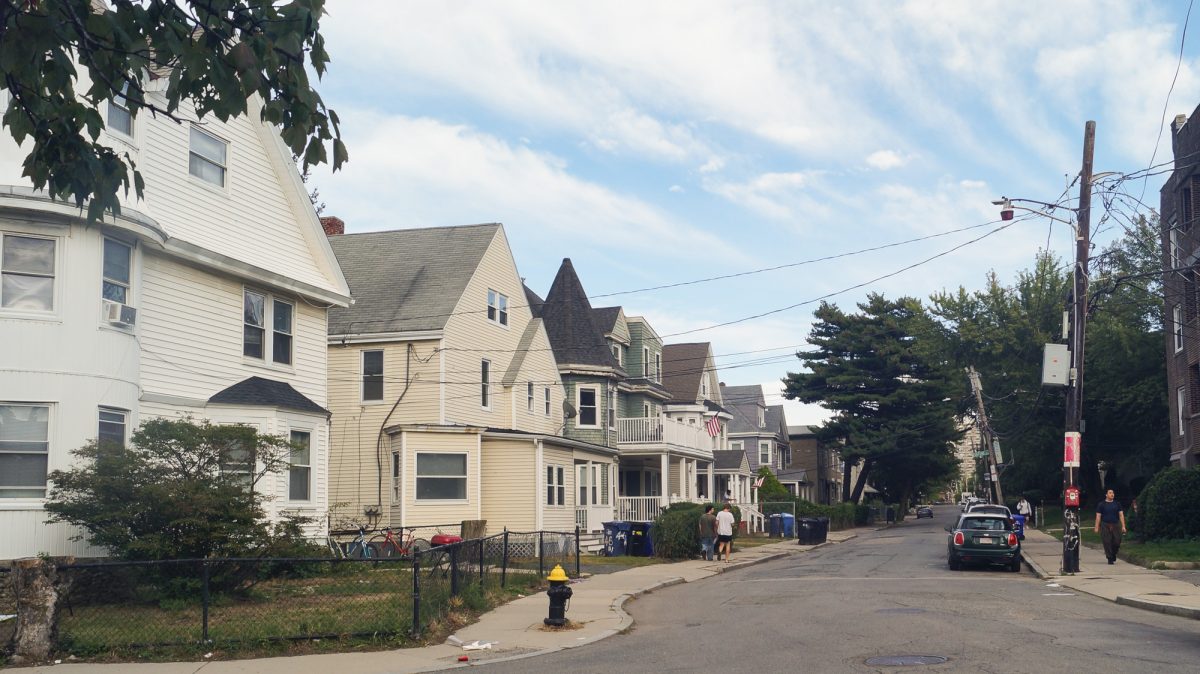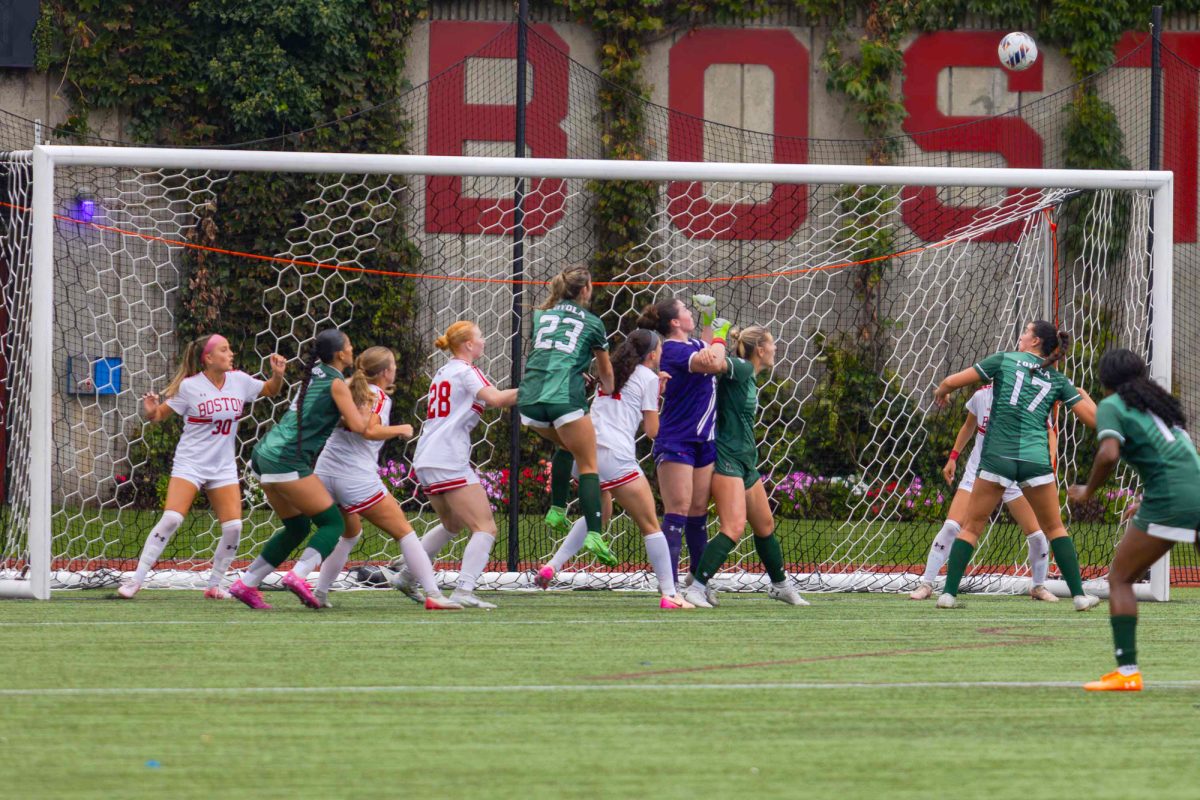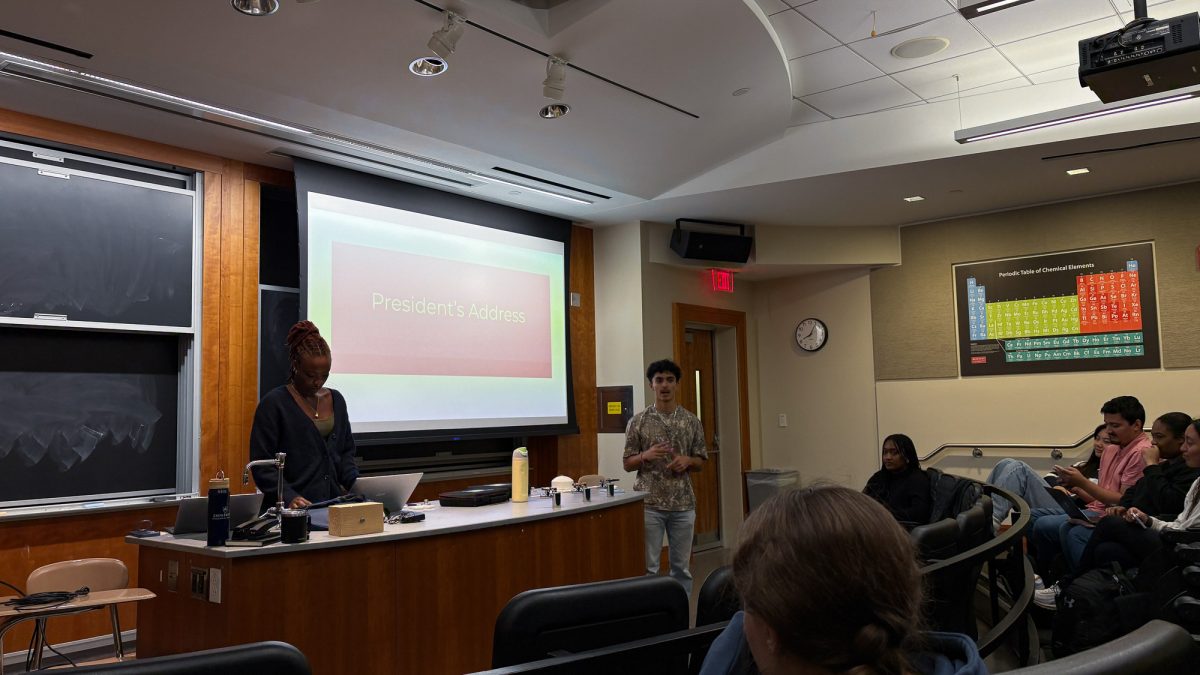By Alyssa DiRubbio, Features Staff Writer
Ah, Commonwealth Avenue: Where the sun is shining, the trees are blooming and the sidewalk is flowing with students in their flip-flops and best summer attire. But what is that squeaking noise, you might ask? Oh, that’s right; it’s those clunky, obnoxious, rubber rain boots that the weather forecast convinced you to wear.
Thanks to Boston’s unpredictable weather, Boston University students are experienced in the art of trial-and-error when it comes to preparing for whatever the day may bring.
At this point, there is no weather extreme enough to catch this campus by surprise. After the spell of unseasonably warm temperatures BU experienced about two weeks ago, it would seem that over the past few years, students have been through the worst of it all: extreme heat and cold, massive snow storms, earthquakes, torrential rains and high-velocity winds. Here’s some of the worst.
Heat exhaustion:
April 16, better known as Marathon Monday, will be a marathon that many students remember for its scorching heat. According an article in the Global Post, the marathon winner crossed the finish line in 2 hours, 12 minutes and 40 seconds. Yet this was the second-slowest race since 1985 due to high temperatures. The high for the day of 87 degrees surpassed the record of 84 degrees in 2003. But if you thought that was hot, the all-time highest recorded temperature ever for Boston was 104 degrees in July 1911. Talk about frying an egg on the sidewalk.
It’s cold in here:
In the other extreme, the lowest recorded temperature was -30 degrees in January 1946. Burr! Boston winters are never exactly an enjoyable time of year. Many upperclassmen on campus may still remember the mounds of snow through which paths had to be shoveled, just to get to class, last winter. Boston.com even officially named January 2011 as the third-snowiest January, and the sixth-snowiest month ever in Boston. However, when it comes to storms, it names the blizzard of March 31 to April 1, 1997 as one of the biggest, and craziest. Trucks were hauling 25.4 inches of snow off the pitcher’s mound on Opening Day at Fenway.
Shaking me crazy:
When it comes to earthquakes, earthquake.usgs.gov considers Massachusetts a fairly “moderate” earthquake zone. Did you know that the city experiences several small tremors every year? Though we may not feel those, for students who were on campus Aug. 23, 2011, it was hard not to notice the swaying buildings when the 5.8-magnitude Virginia earthquake shook Boston. Fortunately, we missed the most destructive earthquake in English-American history to be felt on the east cost: a 6.2-magnitude Cape Ann Hurricane of Nov. 18, 1755, which was felt from Nova Scotia to Connecticut and toppled many brick walls and even church steeples.
The almost windy city:
Everyone knows that it’s just not a normal day without being nearly swept away by continuous gusts of wind across campus. On a day-to-day basis, winds reach between 10 and 20 mph. But imagine getting pounded by a gust of 100 mph? According to the National Weather Service Forecast Office, Boston saw some such blasts of wind in the three-day long Great New England Hurricane of 1938. Costal water levels escalated to 40 feet, 500 lives were lost, more than 57,000 homes were destroyed and property loss was estimated at $4.7 billion in today’s dollars.
The perfect storm:
Unsurprisingly, Boston was also even the setting for the real-life “Perfect Storm” that inspired the book and film. When a low pressure system, a high pressure system and a fading hurricane collided over Atlantic Ocean to create the Andrea Gail on Halloween night in 1991, Boston saw 5.5 inches of rain, 25-foot waves, and the death of 10 people. Spooky!
A flood of molasses:
And a last, but not least, crazy moment of Boston weather doesn’t actually even involve the weather at all. One hundred and fifty Boston residents were injured, and 21 killed, when a wave of 2.3 million gallons of gooey, sweet molasses sped down Commercial Street in the North End at 35 mph on Jan. 15, 1919 in what is now known as the Boston Molasses Flood. At the time, prohibition of alcohol consumption was being amended to the United States Constitution, and molasses was used to manufacture rum. An explosion in the molasses storage tanks resulted in this tragic event, costing Boston $12.4 million dollars’ worth of damage.

























































































































Jim • Aug 2, 2010 at 10:38 pm
There’s no list of violators. Do your homework.